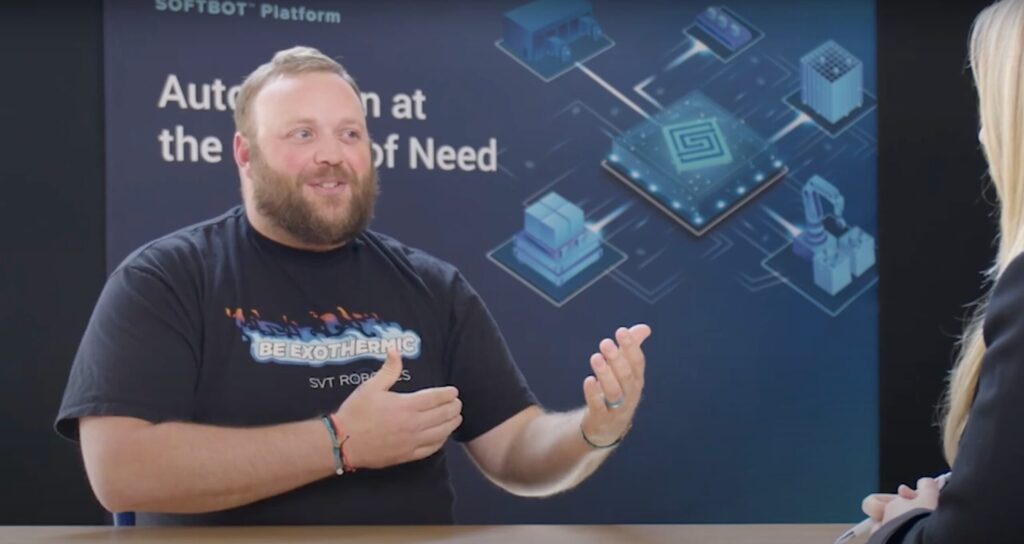Evaluating Automation to Meet Your Business Needs

In this episode, Brian Stroup, Director of Solutions Architecture at SVT Robotics discusses how evaluating supply chain automation requires a flexible approach that caters to diverse business needs. Brian underscores the significance of meticulous planning and stakeholder involvement for to deliver a successful integration, shedding light on both the technical and operational challenges involved.
Chloë: Thank you for joining us, Brian. To start, could you share some insights into the challenges companies face when deploying automation in their supply chains?
Brian: Certainly. One of the major challenges is the assumption of a one-size-fits-all approach. Every business operates uniquely based on specific needs and workflows, often underestimating the diversity within similar industries. Integrating automation requires a nuanced understanding of the existing setup and adaptability to fit these solutions seamlessly.
Chloë: You mentioned integrating automation with existing systems. What are the challenges faced in this regard?
Brian: The technical hurdles often revolve around communication protocols and language differences. Bridging these gaps demands substantial custom coding, leading to technical debt and a more brittle system that’s increasingly challenging to manage.
Chloë: What implications does this technical debt have on operations?
Brian: The use of custom codes results in slower identification and resolution of issues, ultimately leading to a less stable system. Over time, it can significantly affect project timelines.
Chloë: How does this affect staff and their day-to-day operations?
Brian: Understanding the impact on operational staff is crucial. Implementing automation demands not just technical readiness but ensuring that staff are comfortable and well-equipped to handle and benefit from these changes.
Chloë: Are there specific considerations for different departments?
Brian: Absolutely. Operations teams are concerned with the impact on daily tasks and decision-making, while IT focuses on security requirements, deployment methods, and contingency planning for error resolution.
Chloë: You mentioned the significance of asking the right questions. Could you elaborate on that?
Brian: The right questions ensure that the automation solution aligns with the business’s needs and demands. Understanding long-term implications and effects is vital for a successful deployment.
Chloë: So, what’s the key takeaway for businesses considering automation in their supply chain?
Brian: Recognize that these automations are not just immediate implementations; they are investments meant to function flawlessly for a substantial period. Success is about adaptability, maintainability, and long-term effectiveness.
Chloë: How do you advise businesses to approach the process of integrating these systems?
Brian: It’s crucial to involve all stakeholders from the outset, ensuring every department’s needs and constraints are addressed. Robust pre-planning, clear communication among all players, and detailed documentation of requirements are key.
Chloë: Can you share an example from your experience where these considerations made a significant difference in an automation project?
Brian: Absolutely. We encountered a situation where a lack of detailed pre-planning resulted in a rush to manage integrations with multiple vendors in a large-scale project. This led to technical debt, which considerably delayed the project. Comprehensive pre-planning could have significantly mitigated these challenges.
Chloë: For a company initiating automation, what steps do you recommend for a smoother transition?
Brian: Start by evaluating your current processes thoroughly, create a clear roadmap, and engage potential solution providers to explore how their systems can seamlessly integrate. Testing, training, and phased rollouts are also beneficial for a smoother transition.
Chloë: Thank you for your valuable insights, Brian. Your experiences shed light on the complexities and the importance of meticulous planning in automation deployments.
This interview has been edited for length and clarity. Please listen or watch the episode to catch the entire conversation.
